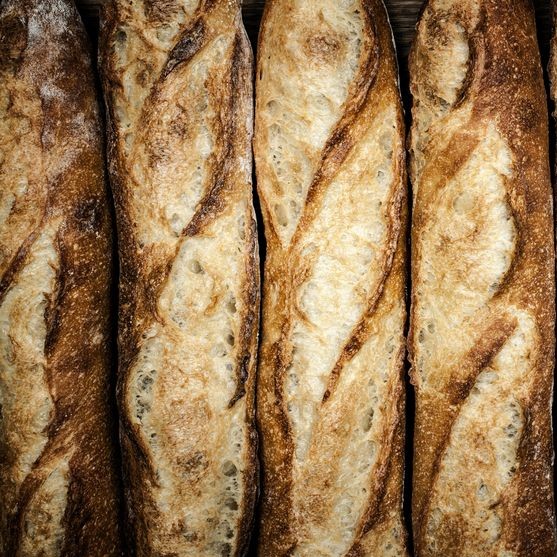
Is artisan bread really healthier than plain white bread?
The use of bleached flour and the addition of dough conditioners, emulsifiers, and mold inhibitors are seen as unhealthy and blamed for our modern health issues. As consumer preferences have begun to shift to more wholesome ingredients, artisan bread began gaining in popularity.
What exactly is artisan bread and is it any healthier than industrially produced white bread?
Artisan bread is loosely defined as bread that is produced using traditional methods and ingredients. Choice of flour type, length of fermentation, and how the bread is made are important characteristics for an artisan loaf. Dough is generally made in small batches with a more hands on approach. With the rise in popularity, the manufacturing of artisan loaves has been scaled up to embrace some modern conveniences. Due to the minimally processed and clean ingredient declaration, consumers believe this to be a healthier bread.
A recent study tried to answer the question – is artisan bread healthier than manufactured white bread?
20 healthy adults participated in a randomized crossover trial of two 1-week-long sessions. Participants consumed traditionally made sourdough-leavened whole-grain bread or industrially made white bread widely available for the study.1
The following clinical parameters were studied:1
- Blood tests on days 0, 7, 21, 28 measuring levels of triglycerides, LDL cholesterol, HDL cholesterol, total cholesterol, ALT, AST, GGT, iron, calcium, creatinine, urea, thyroid stimulating hormone, LDH and CRP.
- Blood pressure measurements at days 0, 7, 21, 28
- Weight and basal metabolic rate (BMR) measurements at days 0, 7, 21, 28
- Average blood glucose levels in the 15 minutes following wakeup taken as an average of four measurements at days 1&2, 5&6, 22&23, and 26&27
- Blood glucose response to OGTT 30 minutes prior to meal and after consumption of 75 g of glucose. This is calculated as the average of two tests performed at days -6&-5, 8&9, 15&16, and 29&30
- Microbiome analysis performed on stool samples taken within 24 hours of days -1, 6, 20, and 27
Test subjects ate standardized meals calculated to have 50 g of available carbohydrates. During the white bread intervention period subjects consumed 3 meals of 110 grams white bread, and 3 meals of 113g white bread + 30g butter.1 Sourdough meals consisted of 3 meals of 145 g sourdough bread, and 3 meals of 149 sourdough bread + 30 g butter.1
Results
Notably, they found that a single week of bread consumption resulted in changes to multiple clinical variables and risk factors that were statistically significant, albeit numerically small and not necessarily clinically significant.1 The test showed no significant difference between consumption of traditionally made sourdough-leavened whole-grain bread or industrially made white bread on the participants.
The study does point out that both types of bread had had very personal results on participants. While one person might have a blood spike after eating white bread, another person experienced the same thing eating the artisan sourdough. Another measure that was dependent on individual participants was gut biome. The researchers found that the microbiota composition remained generally stable and person specific throughout the trial.1
References
- Korem, Tal, David Zeevi,Niv Zmora,Omer Weissbrod,Noam Bar,Maya Lotan-Pompan,Tali Avnit-Sagi,Noa Kosower,Gal Malka,Michal Rein,Jotham Suez,Ben Z. Goldberg,Adina Weinberger,Avraham A. Levy,Eran Elinav,Eran Segal. “Bread Affects Clinical Parameters and Induces Gut Microbiome-Associated Personal Glycemic Responses.” Cell Metabolism 25.6 (2017): 1243-253. Cell.com. Elsevier, 6 June 2017. http://dx.doi.org/10.1016/j.cmet.2017.05.002. Accessed 13 June 2017.

